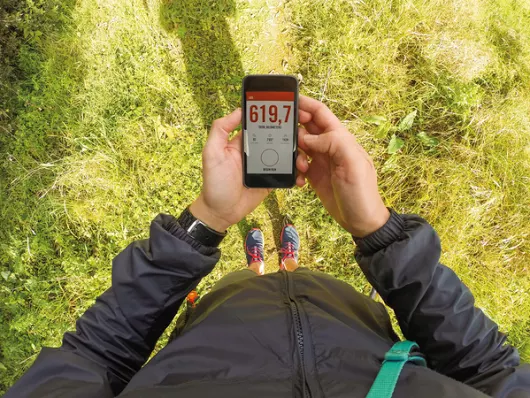Health and fitness apps enable researchers, physicians, sport specialists and healthcare practitioners to maximize health and gather data from large numbers of people (Savage, 2015). Nowadays, the apps have the potential to reach nearly all populations, regardless of gender or ethnicity, even for those who have limited access to healthcare. Another remarkable point is that smartphones allow to perform assessments without be physically present on specific location.

Smartphones made to measure
In this context, several apps are being validated for obtaining data of sports performance and public health issues. In this context, The MyHeart Counts Cardiovascular Health Study is a very good example (McConnell et al., 2017). In this study physical activity was recorded through the motion coprocessor chip of the smartphone. The motion chip was able to include triaxial accelerometer, gyroscope, compass and barometer. Fitness was measured with the 6-minute walk test and final time was registered by the app. Sleep patterns were also registered by the motion chip. MyHeart Counts has demonstrated the feasibility, large-scale and real world assessment of physical activity, fitness and sleep using a smartphone in more than 40.000 people. Smartphones are definitely made to measure!
Apps for measuring fitness
More specifically, apps offer a large potential on fitness assessment, making it inexpensive, easier, accessible, feasible and last leading a laboratory into the pocket.
In fact, considering the importance reached by physical fitness as a powerful indicator not only of sport performance, but also and mainly as a maker of current and future health/disease, it is relevant to known about the currently available apps allowing assessment of the main health-related physical fitness components. An example is My Jump, which has been developed by Balsalobre-Fernandez, Glaister, & Lockey (2015) for measuring vertical jump height. Vertical jump is the most common field test to evaluate lower limb power in various populations and it has been recognized as an important tool to quantify neuromuscular fatigue.
In this sense, we have recently reviewed the apps for measuring the main health-related fitness components available in Google Play and App Store (unpublished material). Therefore, we have concluded some important points: 1- All validated apps conducted under research conditions have been developed for App Store; 2- Course-Navette field-test has been the most use for apps aiming to estimate aerobic capacity; 3- Regarding the muscular strength component most of the apps has been designed to calculate the maximum repetition; 4- Few apps are available to measure velocity and agility; 5- The flexibility category is the one that contains more scientifically validated apps.
Take home message
If you are planning to use an app to measure your fitness, you should pay attention to the following recommendations:
- If you have a Smartphone you have a lab in your pocket.
- Demand scientifically validated apps.
- Check out the ratings and user reviews of the apps.
- Take a look to security aspects.
Adrià Muntaner-Mas, Antonio Martínez-Nicolás and Francisco B. Ortega
The PROFITH research group: http://profith.ugr.es/
Dept. Physical Education and Sports, Faculty of Sports Sciences, University of Granada, Spain.
References
Balsalobre-Fernandez, C., Glaister, M., & Lockey, R. A. (2015). The validity and reliability of an iPhone app for measuring vertical jump performance. Journal of Sports Sciences, 33(15), 1–6.
McConnell, M. V., Shcherbina, A., Pavlovic, A., Homburger, J. R., Goldfeder, R. L., Waggot, D., … Ashley, E. A. (2017). Feasibility of Obtaining Measures of Lifestyle From a Smartphone App. JAMA Cardiology, 2(1), 67.
Savage, N. (2015). Mobile data: Made to measure. Nature, 527(7576), S12–S13.

Thanks for sharing your thought and deep knowledge through this post .This is my first visit to your post. I am very happy Google redirected me to this page. Big thanks to you for sharing such a great post with us.
LikeLike